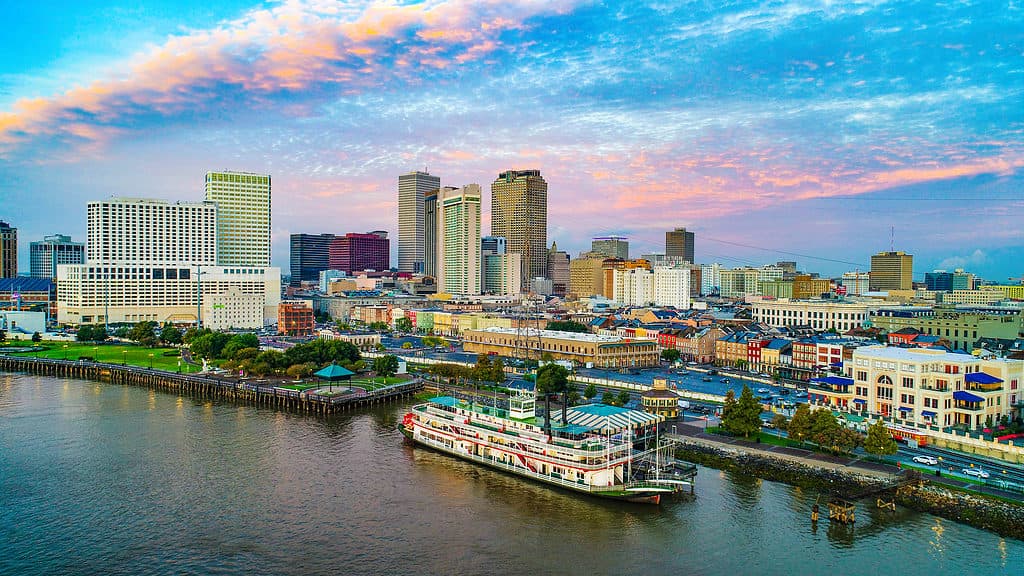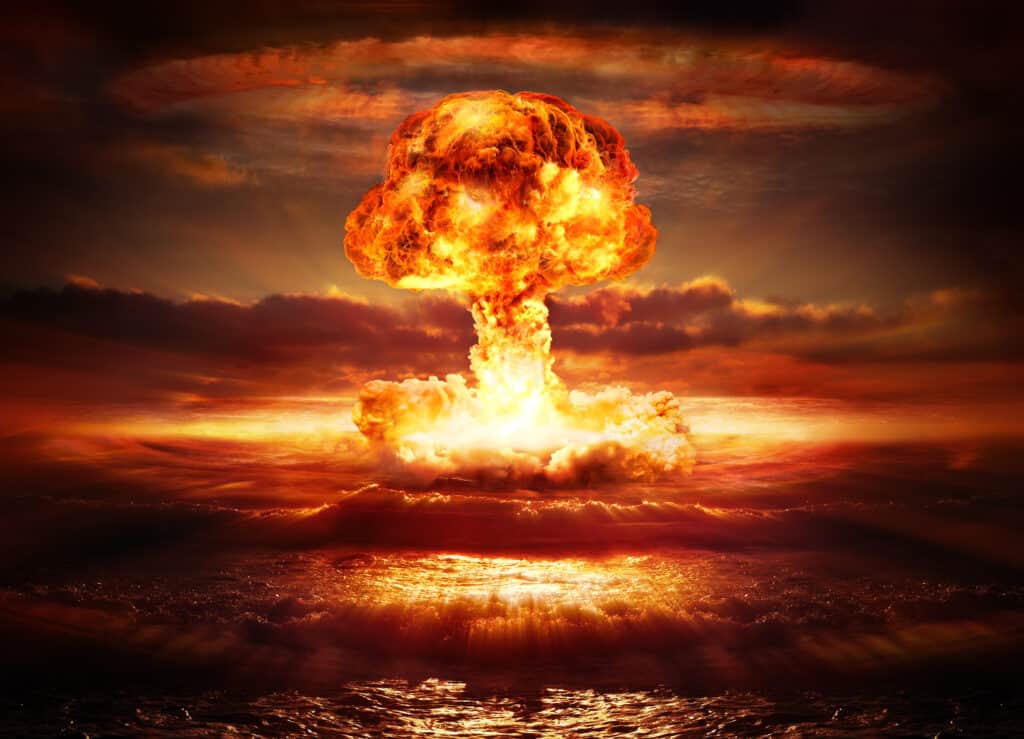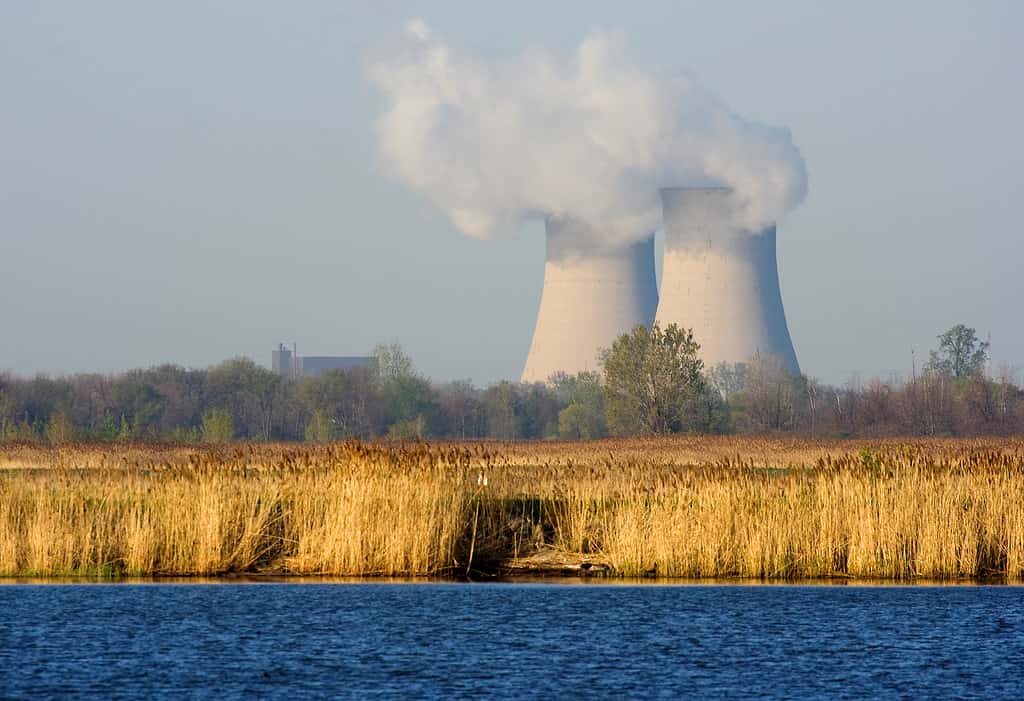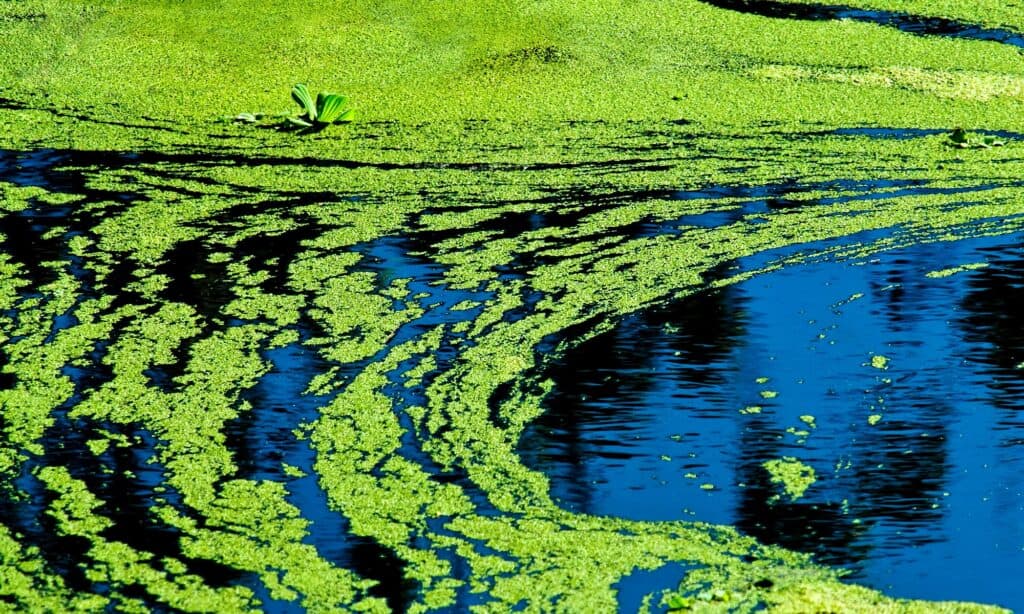Nuclear power gets a mixed reception around the world. Scary accidents at Three Mile Island, Chernobyl, and Fukushima, remind us of how dangerous this technology is and how long-lasting its ill effects can be. This explains why Germany recently made the decision to take its last nuclear reactors off-line, even though that means increasing its use of fossil fuels at a time when supplies are limited and expensive and creating measurable warming effects on the atmosphere. On the other hand, countries like France and the United States plan to continue and even expand their use of nuclear power as part of a strategy to convert completely to clean energy sources like wind, solar, and geothermal. If you live in Louisiana, you might be interested to know your state has two active reactors . . . and the largest is located near New Orleans. Read on to discover the largest nuclear power plant in Louisiana, and what lives around it.

©Kevin Ruck/Shutterstock.com
How Does a Nuclear Power Plant Work?
The basic idea for just about any kind of power plant is to generate electricity by getting a generator to spin. You do this by getting the blades of a turbine to turn a rotor. So the trick is to get those turbine blades moving fast to make a lot of power. There are a couple of ways to do this with water: you either get the water to fall, as in a power station in dam or you heat the water up so it boils and generates steam. Coal, natural gas, solar power, or geothermal can all be used to heat water, but so can nuclear power.
With nuclear power, you use radioactive uranium that is encased into ceramic pellets poured into fuel rods. Hundreds of fuel rods are bundled together in groups in a reactor’s core. As the uranium atoms decay, they release energy and neutrons. Those neutrons shoot off and pierce the nuclei of other uranium atoms in a chain reaction. This is what creates the heat that boils the water that turns the rotor blades and makes the generator spin and create electricity. Simple, right?
What happens if it gets too hot? Will it blow up like a nuclear bomb? Not exactly. A nuclear bomb has a lot of radioactive material super densely packed together to make the biggest explosion it can. In a nuclear reactor, you don’t want an explosion so the material is not packed so tight. The fuel rods are also separated with lead rods that absorb neutrons and don’t alow them to continue to the atoms in other fuel rods. The lead rods can be raised and lowered to make the reaction speed up or slow down, depending on energy needs.

©Romolo Tavani/Shutterstock.com
The Largest Nuclear Power Plant in Louisiana
Louisiana has two nuclear power plants. Both of them are located not too far from large cities. River Bend Nuclear Station is in St. Francisville, which is about 32 miles north of Baton Rouge. It has a generating capacity of 974 megawatts. The Waterford 3 Nuclear Generating Station at Killona is 34 miles west of downtown New Orleans. Of the two, Waterford is the largest nuclear power plant in Louisiana with a generating capacity of 1,152 megawatts. Authorities started building this reactor in 1974 and finished it up in 1985, eleven years later. The total cost of the project was an eye-watering $5.476 billion, but considering that it provides about 10% of the total power needs of the whole state today, it has been considered a good long-term investment. Even though it is so expensive, one of the advantages nuclear power has over other forms of clean energy is that it can produce energy reliably 92% of the time. It really isn’t affected by the weather in the way that solar or wind power can be.

©iStock.com/Pituk Loonhong
Why Do They Build Them Near Cities?
If you’re concerned about the safety of nuclear power plants, a logical question is, why do they build them so close to cities? Here are some of the factors that go into deciding where to build a nuclear power plant:
- They are built in states where they are wanted. Some states, like Hawaii, have banned them, while others, like Kansas, try to attract them by exempting them from property taxes.
- They are built in areas where the population and electricity demand are expected to grow.
- A lot of energy is wasted when it is transmitted through power lines, so power plants are built relatively close to where the power is needed.
- It takes about 2,000 people to build a nuclear power plant over several decades, and 500 to operate it after it starts running. So it needs to be constructed in a place with a large skilled workforce.
- A building site is chosen that is geologically stable, and not likely to be affected by earthquakes, sinkholes, etc.
- It must be close to a water source, like a river or lake.
- Environmental impact studies must be done to make sure the construction and operation of the plant won’t adversely affect fragile ecosystems.
A final observation on this question: they’re built relatively close to cities because they actually are very safe. Safety standards are extremely high and accidents are extraordinarily rare. The few occasions when an accident has happened have been intensely studied so that designs and procedures can be changed to make sure that never happens again.

©James Marvin Phelps/Shutterstock.com
What Lives Near the Largest Nuclear Power Plant in Louisiana?
The most important living things near the largest nuclear power plant in Louisiana are, of course, people. The population of Killona, where the reactor is located, is about 724. It’s located in St. Charles Parish with a total population of 52,549. And it’s 34 miles from downtown New Orleans, with a total population of 383,997.
Some of the wildlife endemic to Louisiana include:
Mammals: rodents, muskrats, nutria, beavers, squirrels, foxes, bobcats
Birds: great blue herons, great horned owls, brown pelicans
Fish: bass, pike, sauger, walleye, bluegill, catfish, blue sucker, shorthead, redhorse, paddlefish, shovelnose sturgeon, and more.
Reptiles and amphibians: turtles, alligators, black snakes, southern leopard frog, gopher tortoise, Louisiana pine snake

©Brian Lasenby/Shutterstock.com
What Environmental Impact Does Nuclear Power Have?
The most serious environmental impact nuclear power has is that it generates radioactive waste that needs to be stored securely for thousands of years. Spent fuel rods and irradiated components of the reactor still generate deadly radiation and, if improperly handled and stored, could leak into water supplies or the soil. They need to be stored in deep underground chambers in geologically stable rock layers and labeled in some way so that people in the distant future, who will have forgotten our languages, will not get curious and open them up.
If radiation were to leak from a reactor, as happened at Chernobyl, it can increase the rates of cancer, birth defects, and genetic mutations. Contrary to myth, this doesn’t mean animals will grow to huge size and attack the city or people will start developing superpowers. In Chernobyl you can see the results in tree trunks and branches that have become strangely knotted and twisted and animals born with deformed limbs. Genetic mutations in real life are rarely anything beneficial; they are generally neutral or negative in their effect on the creature unfortunate enough to have them.
A non-radioactive environmental impact of a nuclear reactor is that it heats up water as part of its operations. When this non-radioactive, but heated water is released back into the environment, the temperature difference can have an effect on the growth of algae and what kinds of plants, animals, and fish will frequent the area.

©iStock.com/Alexlky
What Makes Nuclear Power Safe?
In the United States nuclear reactors are strictly monitored by the Nuclear Regulatory Commission. They make sure the plants are constructed correctly, which is one reason it takes so many years to build them, and that they observe all the safety standards they are supposed to once they start working. Nuclear plants have regular safety inspections. They are designed with different failsafe systems to make sure they can be shut down safely if something starts going wrong. People who work at the plant have to pass strict certification exams before they are allowed near the controls of a plant. They have supplemental training and drills regularly to test them and make sure they know how to handle different kinds of emergencies. And this system is working very well across the country, as our reactors have operated smoothly for decades. The goal of all of this is that you can live your life without having to worry about radiation today, or global warming tomorrow.
The post Discover the Largest Nuclear Power Plant in Louisiana (And What Lives Around It) appeared first on AZ Animals.
from Animal News, Facts, Rankings, and More! - AZ Animals https://ift.tt/AbOmL6Q